America is hurting.
Protests, riots and civil unrest have erupted across the country over the death of George Floyd, a black man in Minneapolis, at the hands of a police officer. Our nation is in pain. Our nation is angry. People demand justice, not just for Floyd, but for the multitude of black men whose lives have been lost as a result of police violence. As I write this report, it is the fourth night that we have seen protests in Minneapolis, including the arrest (and subsequent release) of CNN correspondent Omar Jimenez. This country is tired of hashtags. We need greater systemic societal change. But right now, we need peace. America is on fire. This nation is in crisis.
As Don Lemon said on CNN Tonight, “We have two viruses infecting us right now, Covid-19 and Racism 2020. And we have to deal with both of them.” There’s no mask to protect us from this second virus. It would be remiss of me not to acknowledge these protests that have occupied the news cycle for the past few days. This country needs change.
This is the 7th update in my weekly report on what I’ve read recently on the Covid-19 pandemic and how I see some possible ways going forward. Previous versions are available on this blog. This week, I will share new insights on the state of higher education in the fall as it relates to the virus’ trajectory. Once again, we will be focusing this week’s report on three major topics: a national view, higher education and study abroad.
Since last week’s update was rather long, I’ll aim to be on the short side this week.
A national look
As we begin to see upticks in mobility due to increased movement and a possible resumption of outdoor activities, we must now begin to think of our activities on a spectrum of risk. As NPR reports, a BYOB backyard gathering with one other household: low to medium risk; attending a religious service indoors: high risk. As people begin to let others into their quarantine bubbles, we must consider these risk factors and be smart about our actions. It is still too early to tell how Memorial Day activities have affected the virus’ transmission, even as cases are on the rise in more than 15 states and someone who attended the infamous large gathering at the Lake of the Ozarks has just tested positive.
This past week, I completed a five-hour contact tracing course from Johns Hopkins University on Coursera. This course is a prerequisite for many contact tracing jobs at local state or county health departments — it is worth noting that some areas could require additional training. For reference, the New York contact tracing job requires a commitment of 20 hours per week with the expectation of “a one-year engagement.” Spanning five modules, the course covers the basics of Covid-19, the fundamentals of contact tracing, the steps taken to trace contacts, the ethics of contact tracing (including the use of technology) and skills for effective community. Having known many of the essentials of the disease and its spread, I found the first few modules quite simple. However, it was interesting to learn more about how to effectively and assertively explain contact tracing to those who may not be as receptive to the idea of quarantining for two weeks. It also included tips on how to help others ensure they have the resources they need to quarantine. The course also focused on potential language barriers and dealing with undocumented populations. Due to other work commitments, I will probably be unable to serve as a contact tracer this summer. It was, however, insightful to learn this critical skill and I would encourage others to get involved in our country’s response to the pandemic.
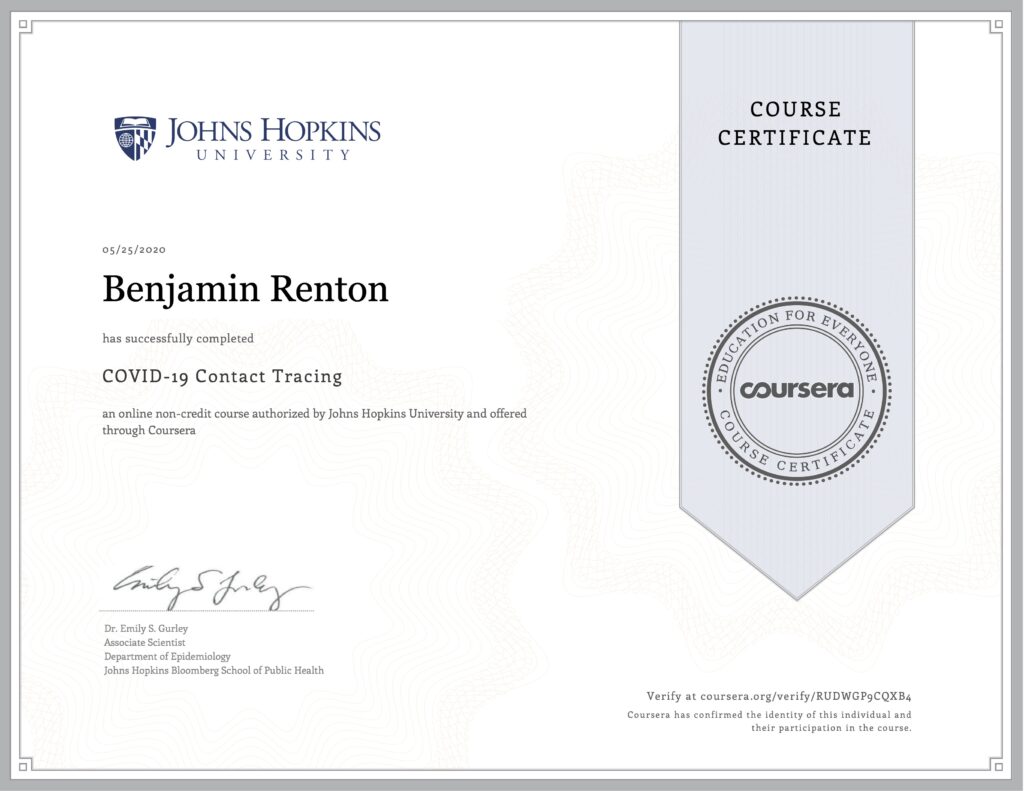
Contact tracing is harder than it sounds. It requires a delicate set of skills which are crucial to breaking the chain of transmission. “The virus is going to do what it’s going to do. We’re not driving this tiger, we’re riding it,” said the University of Minnesota’s Michael Osterholm on CNN. There is still so much we do not know about this virus, including that asymptomatic patients may have a milder illness with a shorter form of viral shedding.
Let’s see what we’ve learned this week.
As the CDC states that the virus does not spread easily on contaminated surfaces, a study in a South African hospital could suggest otherwise. Let’s remind ourselves of the three main methods of transmission that we can possibly identify for this virus.
- Large droplet
- Fomite (contaminated surfaces)
- Airborne
We know airborne transmission happens. This is why physical distancing is critical, as well as adequate ventilation. Masks have been seen as a key way to curtail this transmission.
One study demonstrates that the virus can be detected in environmental samples of sewage before an outbreak occurs in the hospitals. Outbreaks like those at an Atlanta private school graduation party and an Arkansas swim party show that transmission, while less common outdoors, is still possible. A new New York Times article reports that it is not whether you were exposed to the virus that matters, but rather to how many particles you were exposed. The critical number of viral load is still unknown. Additionally, more viral particles could indicate a higher severity of illness. According to the article, “Three factors seem to be particularly important for aerosol transmission: proximity to the infected person, air flow and timing.” This is why actions such as opening a window could help in mitigating transmission.
This Vox video does a great job at explaining the two methods of what they consider “smart testing.” We’ve talked about smart testing before. In this argument, one method is to randomly test parts of the population. According to experts, the country would need 10 million tests per day. Another method is to test the contacts of those who test positive, which would result in needing 900,000 tests per day.
A new study from the CDC shows four different lines of evidence suggesting that limited U.S. community transmission likely began in late January or early February, after a single importation from China, followed by multiple importations from Europe.
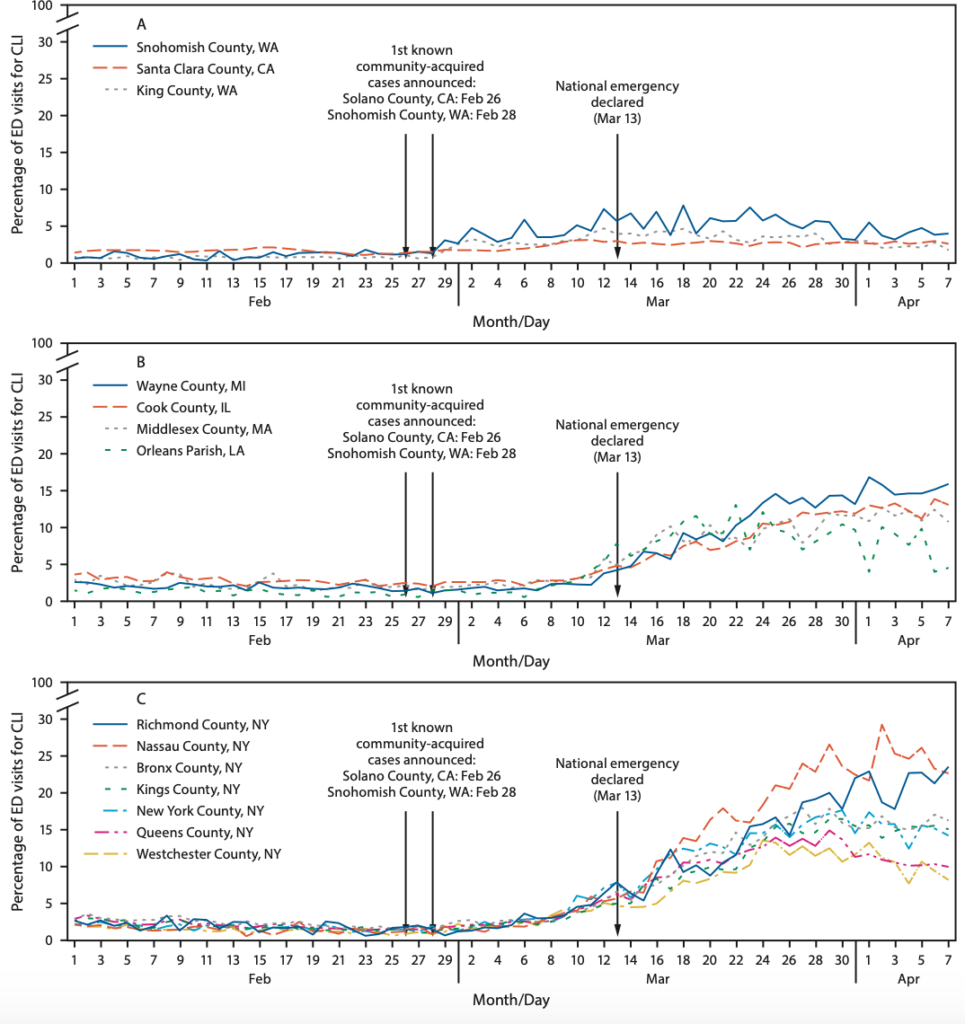
This is consistent with new research from this pre-print paper showing that sustained transmission in the U.S. did not originate from the first case in Washington, and instead came weeks later in mid-February. I would expect more studies like these to be released in the coming weeks.
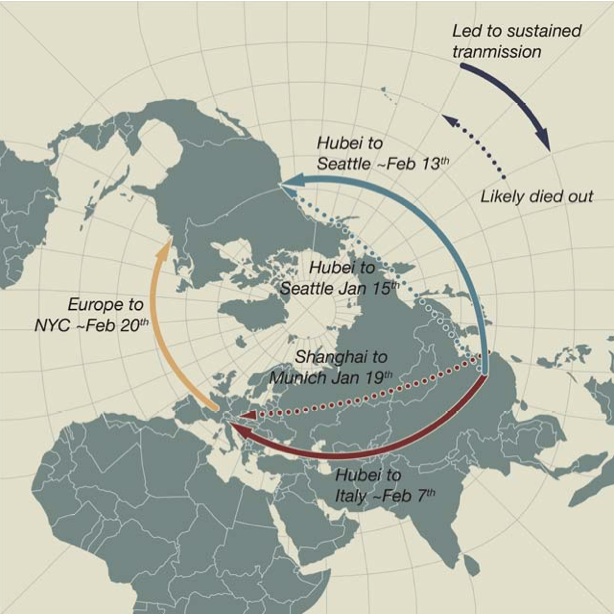
The Atlantic’s Ed Yong writes on America’s “patchwork pandemic,” asserting that states’ quarantine measures are used as a method merely to buy time; the key is in testing and tracing. “Don’t build one big wall; instead, ready a thousand nets,” he writes.
There is no question that this pandemic is hitting this country on a regional and state level. Here is a great dashboard that monitors many state-level metrics.
New CDC models have shown that total Covid-19 deaths are likely to exceed 115,000 by June 20. This could change, especially with the newest IHME predictions released in the next few days.
This week our country passed a devastating milestone: 100,000 official deaths from the coronavirus. The director of Johns Hopkins’ Center for Health Security, Tom Inglesby, has some interesting insights here, including the need for clear communication on the part of public health leaders. Pulling out of the WHO at this point is an incredibly dangerous move, which is the latest in the series of distractions from President Trump this week. As cardiologist Jonathan Reiner said, “Terminating our relationship with the WHO during a pandemic is like cutting off water to the Fire Dept while your house is on fire because you have a beef with the Fire Chief.”
Behind each figure is a name. Somebody’s family member. Friend. Colleague. Loved one. These are Americans that have lost their lives and their futures. Many of these deaths were avoidable. This fact is a wound our nation will live with for years to come. Beyond the 100,000 whose lives we have lost, the virus has caused serious illness to millions more. This is nowhere near over. And as we see an absence of leadership on the highest level, it is now up to us and the individual decisions we make for our country. If this is a war, then let us all be drafted into doing what is right for all of us. It’s our collective responsibility. As Covid-19 continues to spread through our communities, Racism-20 has risen to the forefront of our national identity. Is this who our country is? America is weaker and sicker than ever before. It is up to us to make it stronger. May those who have lost their lives rest in peace and may their memories be a blessing.
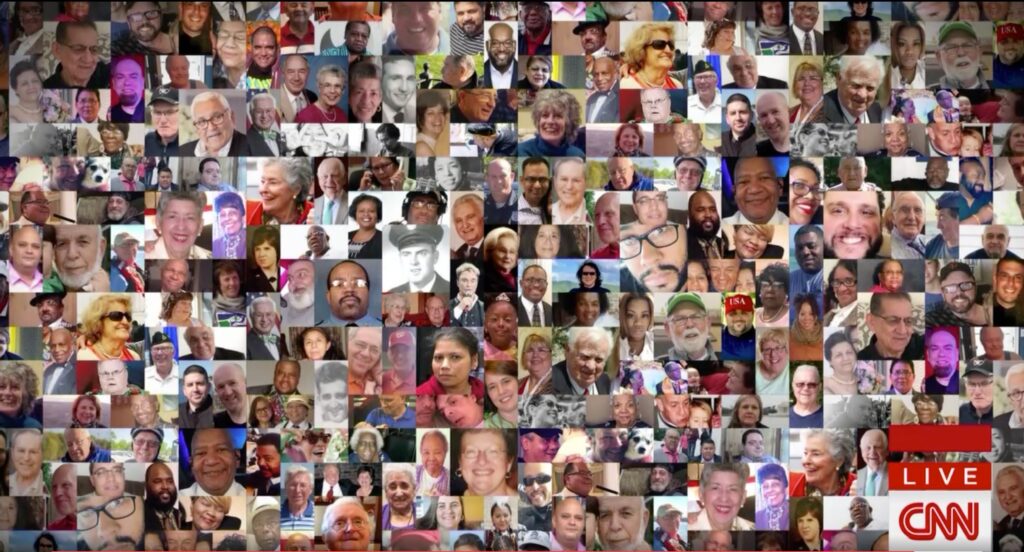
Having laid down the groundwork on the national scene, let’s take a look at the latest developments in higher ed.
Higher education
We are getting a more complete and clearer picture on how colleges envision their fall semesters. In the coming weeks, it will be quite difficult for me to report how each school is planning to address the fall, so I’ll give you some of the highlights. An overview of colleges’ plans in this brilliant map can be seen from our colleagues at the Daily Pennsylvanian.
Brown University has outlined a three-term calendar, with fall, spring and summer terms. The terms are shorter than normal and there will be no spring break. Cornell University has outlined a series of six options for public input. These vary on what can be called “off ramps,” or points in the semester where the school could potentially switch to online instruction. In the eyes of one Indiana University professor, IU’s restart report presumes a high level of student compliance with publicly posted rules, and it also assumes that “‘risk mitigation’ measures outlined in the report will be considered sufficient to allay concerns about the serious dangers.” The University of Colorado at Boulder has released a plan which includes completing the semester remotely after Thanksgiving. First-year students will be put in cohorts of 10 to eat, live and take classes together — their general education classes will be assigned. This is similar to a “pod” model. At smaller liberal arts schools, where many students take classes across the curriculum, this would be less possible. There have been a few schools that have opted to start later, such as Washington University in St. Louis.
We have also seen schools form coalitions to develop plans in tandem, such as this plan in Massachusetts. Using a phased approach, the plan asks the state government for testing help and a “safe harbor from liability.” Liability is one of a series of issues that colleges must face in the fall. A similar plan has been developed in Connecticut. However, as Professor Robert Kelchen points out, it is currently hard to see that testing capacity can be acquired for both higher education institutions and K-12 schools.

Harvard biostatistics professor Xihong Lin outlines six pillars that colleges must consider for the fall:
- Mask-wearing
- Social distancing
- Testing
- Tracing
- Isolation and quarantine
- Treatment
As ending in-person classes before Thanksgiving becomes an emerging strategy, we begin to see this domino effect akin to colleges suspending classes in March, illustrating influence from political pressures from state governments and peer institutions. I would like to use Duke University as an example of a well-developed plan. As my colleague Stefanie Pousolides at the Duke Chronicle reports, students will move in staggered intervals, with no fall break and final exams finishing prior to Thanksgiving. Students, faculty and staff are expected to wear masks and undergo daily symptom checks via an app. All students, with the exception of those “on approved travel,” are expected to stay in the Durham area for the year. (Similar to Greek life and partying, this could be hard to enforce.) This is one of the only plans we have seen for both the fall and spring semesters.
New CDC guidance for colleges and universities shows possible modifications to dining (grab-and-go options), housing (all singles if possible) and classes (smaller class sizes), as my colleagues at Colorado College report. However, as the Chronicle of Higher Education’s Andy Thomason points out, we still need to see criteria that colleges will use to move learning online, also known as “off-ramps.” With this image of a socially distanced campus coming into view, college transparency and communication to students and families, faculty and staff and local neighbors will be critical. I do think that all of this evidence from a variety of schools means that many will carry out their plan to hold in-person classes this fall. Many college presidents from this American Council on Education survey seem to agree with this statement.
We have also seen a multitude of op-eds this week by college presidents. This rather assertive op-ed by the president of Purdue University and former Governor of Indiana, Mitch Daniels, leaves some questions in my mind:
- No mention about how faculty or staff feel
- How much will these measures cost, such as providing every student with a thermometer? Nothing is foolproof
- How do you ensure student cooperation?
At the Middlebury Campus, the student newspaper at which I edit, we have begun to survey students on their preferences on various models for the fall. I expect to release these results in next week’s report. We will also be working with peer schools to gather similar data.
Finally, I would like to highlight some new data that my Middlebury Campus colleague Jake Gaughan and I have analyzed. Using the Chronicle of Higher Education’s dataset of colleges’ plans for the fall, we have broken out plans by multiple variables: region, public/private, city/suburb/town, acceptance rate, percentage of out-of-state, international students and financial aid students. While few correlations exist between these final four variables and plans for the fall, it seems that a larger proportion of public colleges and universities are currently planning for an online fall compared to their private counterparts. Additionally, more schools in the West are planning for online instruction.




There are more interactive visuals here. If you do find any cool trends, let me know.
You can explore the data for yourself in this Tableau dashboard. We will try to update this for each weekly report.
Study abroad and international travel
I still don’t think programs will be running for the fall. More colleges have suspended fall semesters abroad, including Dartmouth College and the University of California. As these programs are being suspended, some international students may be unable to return to the U.S. for the fall. We will continue to monitor these two flows. Hopefully, by next week, I will have another map to show restrictions on visas and quarantines in various countries around the world.
The Good Stuff
Let’s roll the clips of the good stuff. In my weekly tradition, I feature my favorite pieces from the week, including my favorite examples of student journalism.
- A moving tribute to the 100,000 lives we have lost.
- The pandemic has created a new role in society for the automobile, as many attend drive-in movies and drive-in baby showers.
- A seven-year-old kid has thrown a socially distanced prom after his nanny’s prom was cancelled.
- A great set of illustrations from a couple undergoing separate quarantine in Beijing.
- Skateboarding in New York City during the pandemic.
- An in-depth report into the decisions Brown University made to move classes online in March.
- The launch of the SpaceX Crew Dragon and subsequent landing of the booster rocket on a drone ship.
- Seniors’ unprecedented semester on and off Harvard’s campus, as reported by colleagues Juliet Isselbacher and Amanda Su.
Conclusion
As we go into June, institutions of higher learning will continue to make decisions as the country progresses in its pandemic trajectory. It’s all a big experiment. We have to continue monitoring the data and do our part to keep our fellow Americans safe and healthy. There is hope.
I’d like to thank all the student journalists with whom I have the pleasure of working. In the next weeks and months, these student journalists will become ever more important in chronicling their colleges’ decisions for the fall and beyond. Support their work by reading it.
Let’s all keep doing what we’re doing and we’ll get through this together. My best to all for good health.
Like what you see? Don’t like what you see? Want to see more of something? Want to see less of something? Let me know in the comments.
For more instant updates, follow me on Twitter @bhrenton.

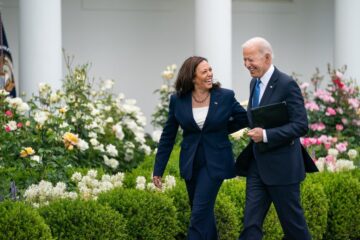

4 Comments
Trenton · June 1, 2020 at 10:14 am
Hey Benjy! This was excellent. Thanks for the hard work and I will be checking back in with this page for sure. Today we are having our first faculty senate meeting about COVID19 measures. I will be sharing this with my colleagues. All the best to you!
Benjy Renton · June 1, 2020 at 9:54 pm
Thanks so much! Very glad you could share. Hope all is well at BHSU!
Where We Stand with Covid-19 — June 5 - Off the Silk Road · June 6, 2020 at 12:43 pm
[…] higher education and study abroad. Previous versions are available on this blog, Off the Silk Road. Last week, I presented new insights and data with regards to how colleges are planning for the fall. This […]
Where We Stand with Covid-19 — June 12 - Off the Silk Road · June 13, 2020 at 10:18 am
[…] and politics. I would also add one more: local K-12 schools. Two weeks ago, my colleague Jake and I presented some of our findings along these variables. This week, the Chronicle used many of the same techniques to show that […]
Comments are closed.